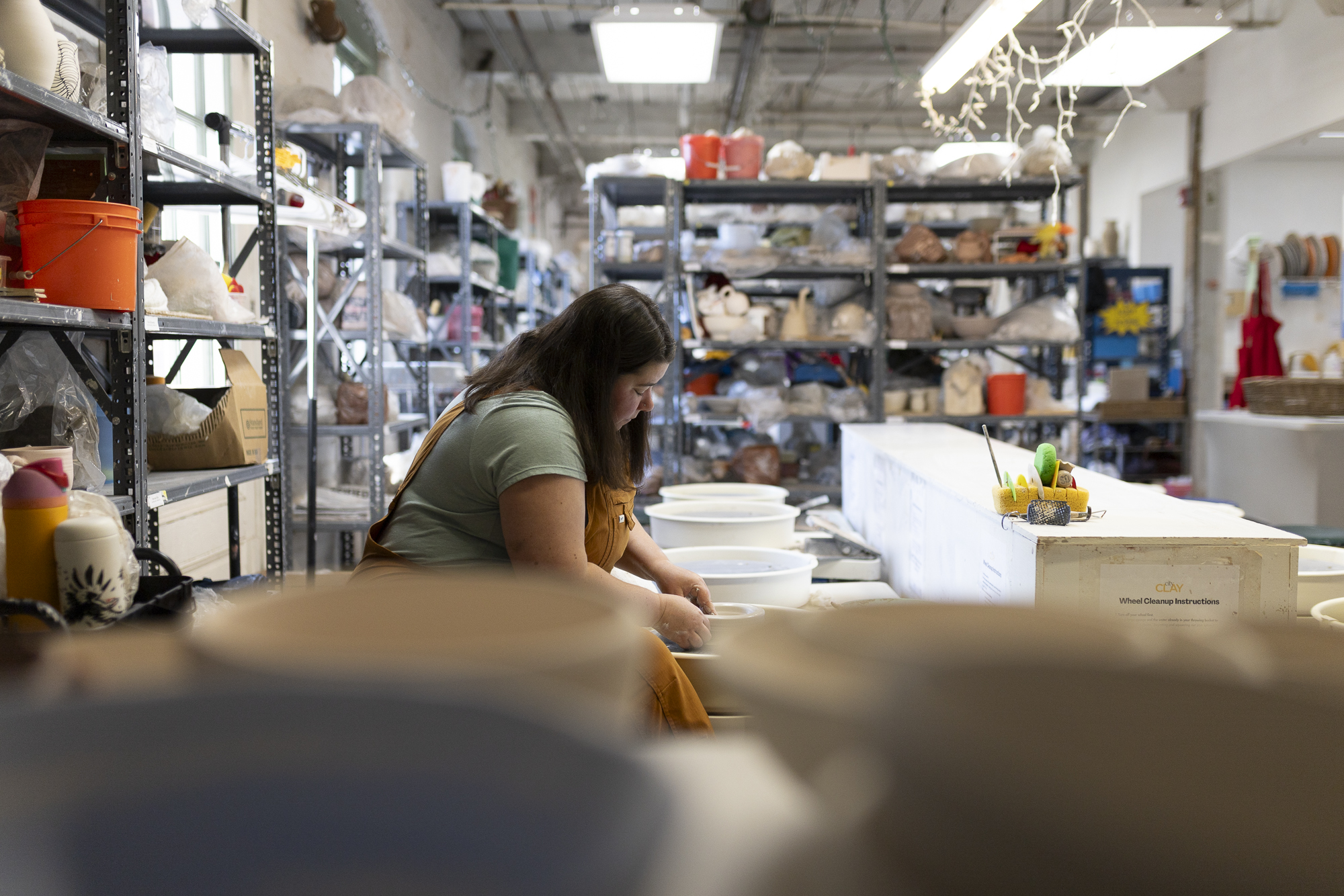A special kind of satisfaction can be found in making something useful. As one of the oldest human crafts, pottery still employs techniques that have changed very little from those used thousands of years ago. Ever since City Clay opened in the Silk Mills Building, I’ve wanted to take a class there. This spring, I decided to fling some clay.
What
A 10-week basic wheel pottery class at City Clay.
Why
Making things from clay feels satisfying on a primal level.
Cost
Class fee is $390, plus materials.
How it went
Three-dimensional things exist now due to my efforts (and they’re not completely lopsided).
An earthy scent welcomed me upon entering City Clay, the aroma reminiscent of the damp streambanks in the woods behind my childhood home. After purchasing some basic tools and clay, I joined my classmates at a little pod of motorized pottery wheels. Several people were repeating the class, having taken the same basic wheel course the session before with the same instructor—a ringing endorsement of the place.
After donning aprons and doing intros, we attempted to center clay on our wheels. Our instructor demonstrated centering and then pulling up a cylinder, making the process look amazingly easy (spoiler alert: it’s not). She encouraged the new newbies to focus on centering for as long as it took, and tasked more advanced students with throwing cylinders after they centered their clay—centering is an essential skill to becoming successful at throwing on a wheel.
The centering process began with slapping and smacking the clay into a ball. Next, we dropped our clay balls roughly onto the center of the bats on our wheels. Bats are flat disks that fit onto the wheel that can be moved afterwards for pots to dry on them. More smacking ensued, to get the clay adhered to the bat and shape it kind of like a volcano cone. Then the real fun began. With wheels spinning full throttle, we braced the heel of one palm against the clay, wedging the elbow of that arm into our body for added support. The other hand cupped around the other side of the clay. Then, using both the push of the braced arm and the pull of the cupped hand, we coned up, and urged the clay to become centered on the spinning wheel.
It was at this point that I started showering nearby classmates with saturated clay. Keeping clay wet during the centering process makes it easier, an insight that I had taken deeply to heart. My classmates handled the splatter with kindness and grace, because one does not sign up for a pottery class and expect to stay clean. In fact, somebody wore a special pottery apron with legs attached that I affectionately dubbed the “assless chaps of pottery.”
The two-and-a-half-hour class flew by. We got dirty. We made mistakes. We cracked bawdy jokes. We made a mess. It felt awesome. Wheel-throwing requires a level of focus that keeps one present. The brain and body collaborate, constantly sharing information to orchestrate minute adjustments in the hands to make minute changes in the clay. I find the act to be immersive, such that thoughts of everything else fall away. For those who deal with anxiety, like me, it’s a welcome reprieve from the spinning that’s often in our heads.
By the end of the first class, I had a vase to show for my trouble. Full disclosure: I’d taken pottery as a kid, so the muscle memory helped. Some spent the entire first class practicing centering (time well spent), while others made mugs, vases, and planters.
Photo: Jeff Morgan






